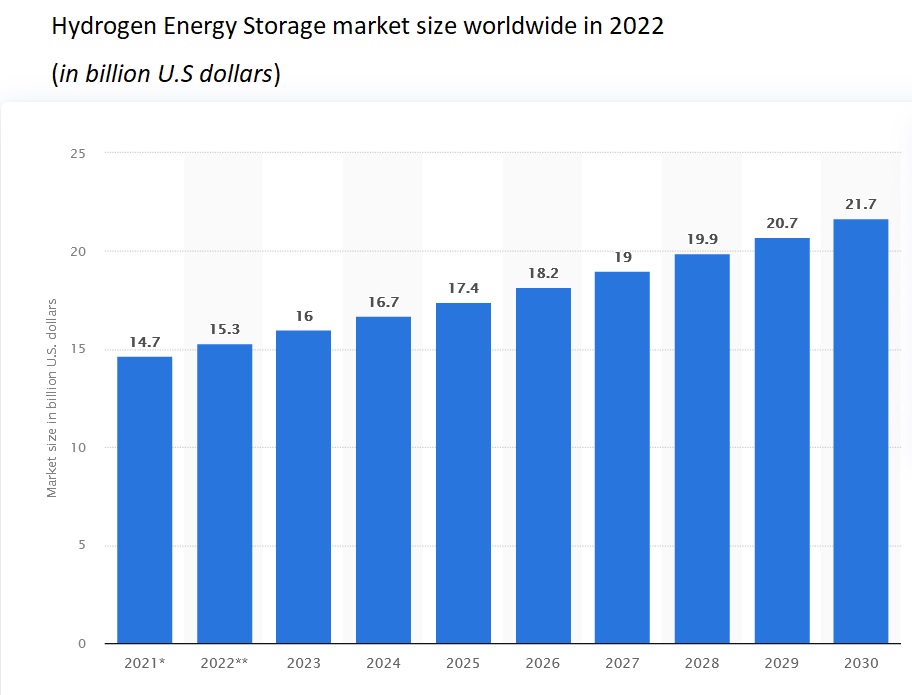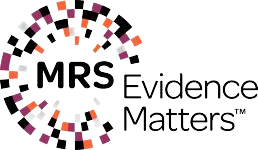Report Overview
- Understand the latest market trends and future growth opportunities for the Hydrogen Generation and Storage Systems industry globally with research from the Global Industry Reports team of in-country analysts – experts by industry and geographic specialization.
- Key trends are clearly and succinctly summarized alongside the most current research data available. Understand and assess competitive threats and plan corporate strategy with our qualitative analysis, insight, and confident growth projections.
- The report will cover the overall analysis and insights in relation to the size and growth rate of the “Hydrogen Generation and Storage Systems Market” by various segments at a global and regional level for the 2010-2030 period, with 2010-2021 as historical data, 2022 as a base year, 2023 as an estimated year and 2023-2030 as forecast period.
Description:
- In the changed post COVID-19 business landscape, the global market for Hydrogen Generation and Storage Systems estimated at US$1.93 Billion in the year 2022, is projected to reach a revised size of US$2.9 Billion by 2030, growing at a CAGR of 5.25% over the period 2022-2030.
- In Hydrogen Generation, On-Site, one of the segments analyzed in the report, is projected to record 3.4% CAGR and reach US$1 Billion by the end of the analysis period. Considering the ongoing post pandemic recovery, growth in the Portable segment is readjusted to a revised 4.6% CAGR for the next 8-year period.
- The Hydrogen Generators market in the U.S. is estimated at US$336.6 Million in the year 2022. China, the world`s second largest economy, is forecast to reach a projected market size of US$82.4 Million by the year 2030 trailing a CAGR of 5.3% over the analysis period 2022 to 2030. Among the other noteworthy geographic markets are Japan and Canada, each forecast to grow at 2.5% and 3.1% respectively over the 2022-2030 period. Within Europe, Germany is forecast to grow at approximately 3.1% CAGR.
- In Hydrogen Storage, Physical, one of the segments analyzed in the report, is projected to record 6.5% CAGR and reach US$861.6 Million by the end of the analysis period. Considering the ongoing post pandemic recovery, growth in the Material-Based segment is readjusted to a revised 6.9% CAGR for the next 8-year period.
- The Hydrogen Storage market in the U.S. is estimated at US$250.8 Million in the year 2022. China, the world`s second largest economy, is forecast to reach a projected market size of US$242.6 Million by the year 2030 trailing a CAGR of 6.3% over the analysis period 2022 to 2030. Among the other noteworthy geographic markets are Japan and Canada, each forecast to grow at 6.2% and 5.3% respectively over the 2022-2030 period. Within Europe, Germany is forecast to grow at approximately 5.4% CAGR.
MARKET DATA INCLUDED
- Unit Sales, Average Selling Prices, Market Size & Growth Trends
- COVID-19 Impact and Global Recession Analysis
- Analysis of US inflation reduction act 2022
- Global competitiveness and key competitor percentage market shares
- Market presence across multiple geographies – Strong/Active/Niche/Trivial
- Online interactive peer-to-peer collaborative bespoke updates
- Market Drivers & Limiters
- Market Forecasts Until 2028, and Historical Data to 2015
- Recent Mergers & Acquisitions
- Company Profiles and Product Portfolios
- Leading Competitors
The Report Includes:
- The report provides a deep dive into details of the industry including definitions, classifications, and industry chain structure.
- Analysis of key supply-side and demand trends.
- Detailed segmentation of international and local products.
- Historic volume and value sizes, company, and brand market shares.
- Five-year forecasts of market trends and market growth.
- Robust and transparent research methodology conducted in-country.
- Qualitative and quantitative analysis of the market based on segmentation involving both economic as well as non-economic factors.
- Provision of market value (USD Billion) data for each segment and sub-segment.
- Analysis by geography, region, Country, and its states.
- A brief overview of the commercial potential of products, technologies, and applications.
- Company profiles of leading market participants dealing in products category.
- Description of properties and manufacturing processes.
- marketed segments on the basis of type, application, end users, region, and others.
- Discussion of the current state, setbacks, innovations, and future needs of the market.
- Examination of the market by application and by product sizes; utility-scale, medium scale and small-scale.
- Country-specific data and analysis for the United States, Russia, China, Germany, United Kingdom, France, Japan, Israel, Saudi Arabia, South Korea, United Arab Emirates, Canada, Switzerland, Australia, India, Italy, Turkey, Qatar, Sweden, Spain, Belgium, Netherlands, Norway, Singapore, Egypt, Denmark, Austria, Vietnam, Brazil, Argentina, Mexico, South Africa, and others.
- Coverage of historical overview, key industrial development and regulatory framework.
- Analysis of competitive developments, such as contracts & agreements, expansions, new product developments, and mergers & acquisitions in the market.
- A look at the opportunities in the market for stakeholders and provide a competitive landscape of the market leaders.
Reports Scope and Segments:
| Report Attribute | Details |
| Market size in 2022 | US$1.93 Billion |
| Market size forecast in 2030 | US$2.9 Billion |
| Growth Rate | CAGR of 5.25% from 2022 to 2030 |
| Base year for estimation | 2022 |
| Historical data | 2015 – 2022 |
| Forecast period | 2023 – 2030 |
| Quantitative units | Revenue in USD million and CAGR from 2023 to 2030 |
| Report coverage | Revenue forecast, company ranking, competitive landscape, growth factors, trends, DROT Analysis, Market Dynamics and Challenges, and Strategic Growth Initiatives
COVID-19 Impact, Market Growth Trends, Market Limiters, Competitive Analysis & SWOT for Top Competitors, Mergers & Acquisitions, Company Profiles, Product Portfolios Market Size, Market Shares, Market Forecasts, Market Growth Rates, Units Sold, and Average Selling Prices. |
| Segments covered | Source, Technology, State, End Use and Region |
| Regional scope | North America; Europe; Asia Pacific; Latin America; Middle East and Africa and rest of the world |
| Country scope | United States, Russia, China, Germany, United Kingdom, France, Japan, Israel, Saudi Arabia, South Korea, United Arab Emirates, Canada, Switzerland, Australia, India, Italy, Turkey, Qatar, Sweden, Spain, Belgium, Netherlands, Norway, Singapore, Egypt, Denmark, Austria, Vietnam, Brazil, Argentina, Mexico, South Africa, and others. |
| Key companies profiled | Air Liquide SA; Air Products Inc.; Ally-Hi Tech; Aquahydrex; Atawey; Chart Industries; Chromalytic Limited; Claind; Cockerill; Cummins Inc.; Deokyang Co., Ltd.; Electrochaea; Enapter; Engie; EPOCH Energy Technology Corporation; Ergousp; Exytron; FuelCell Energy Inc.; GENH2; GKN Sinter Metals Engineering GmbH; Green Hydrogen Systems; Hbank Technologies Inc.; Hexagon Composites ASA; Hiringa Energy; Honeywell International, Inc.; HPS Home Power Solutions GmbH; HYDROGEN IN MOTION; Hydrogenics Corporation; Hydrogenious LOHC Technologies; Hygear; HyTech Power; Idroenergy; INOX India Pvt Ltd; ITM Power Plc; Iwatani Corporation; Jingli Hydrogen; Linde AG; Luxfer Holdings Plc; Matheson Tri-Gas, Inc.; McPhy Energy SA; Messer Group GmbH; Mitsubishi Kakoki Kaisha Ltd.; Nedstack Fuel Cell Technology BV; Nel ASA; Nuvera Fuel Cells LLC; Parker Hannifin Corporation; Plug Power Inc.; PowerTap; Pragma Industries; Praxair Inc; Proton OnSite; Showa Denko; Siemens Energy; Starfire Energy; Steelhead Composites Inc.; Taiyo Nippon Sanso Corporation; Uniper; Vrv S.P.A; Worthington Industries Inc.; Xebec and others |
| Customization scope | Free report customization (equivalent up to 20 analyst’s working days) with purchase. Addition or alteration to country, regional & segment scope. |
| Report Format | PDF, PPT, Excel & Online User Account |
Report Segmented by:
Based on Source:
- Blue Hydrogen
- Green Hydrogen
- Grey Hydrogen
Based on Generation Type:
- On- Site
- Portable
Based on state:
- Gas
- Liquid
- Solid
Based on technologies:
- Compression
- Liquification
- Material based
- Steam Methane Reforming
- Water Electrolysis
- Partial Oil Oxidation
- Coal Gasification
- Cylinder
- Physical
- Merchant/Bulk
- On-Site
- On-Board
Based on application:
- Stationary power
- Transportation
Based on end use:
- Industrial
- Commercial
- Electric utilities
- Petroleum Refinery
- Ammonia Production
- Methanol Production
- Transportation
- Power Generation
- Chemicals
- Fuel Cells
- Metal Working
Based on region:
- North America
- South America
- Europe
- Asia Pacific
- Middle East & Africa
- Rest of world
Companies Covered in Report:
| Air Liquide SA | HyTech Power |
| Air Products Inc. | Idroenergy |
| Ally-Hi Tech | INOX India Pvt Ltd |
| Aquahydrex | ITM Power Plc |
| Atawey | Iwatani Corporation |
| Chart Industries | Jingli Hydrogen |
| Chromalytic Limited | Linde AG |
| Claind | Luxfer Holdings Plc |
| Cockerill | Matheson Tri-Gas, Inc. |
| Cummins Inc. | McPhy Energy SA |
| Deokyang Co., Ltd. | Messer Group GmbH |
| Electrochaea | Mitsubishi Kakoki Kaisha Ltd. |
| Enapter | Nedstack Fuel Cell Technology BV |
| Engie | Nel ASA |
| EPOCH Energy Technology Corporation | Nuvera Fuel Cells LLC |
| Ergousp | Parker Hannifin Corporation |
| Exytron | Plug Power Inc. |
| FuelCell Energy Inc. | PowerTap |
| GENH2 | Pragma Industries |
| GKN Sinter Metals Engineering GmbH | Praxair Inc |
| Green Hydrogen Systems | Proton OnSite |
| Hbank Technologies Inc. | Showa Denko |
| Hexagon Composites ASA | Siemens Energy |
| Hiringa Energy | Starfire Energy |
| Honeywell International, Inc. | Steelhead Composites Inc. |
| HPS Home Power Solutions GmbH | Taiyo Nippon Sanso Corporation |
| HYDROGEN IN MOTION | Uniper |
| Hydrogenics Corporation | Vrv S.P.A |
| Hydrogenious LOHC Technologies | Worthington Industries Inc. |
| Hygear | Xebec |
After Sales Support
- Every updated edition of the report and full data stack will be provided at no extra cost for 24 months.
- Latest 2022 base year report.
- Free Updated edition of 2023 every quarter without any hidden cost.
- No user limitation for the report. Unlimited access within the organization.
- Unrestricted post-sales support at no additional cost
- Free report customization (equivalent up to 10 analyst’s working days) with purchase. Addition or alteration to country, regional & segment scope
- Global Industry Reports will support your post-purchase for a period of 24 months to answer any of your queries related to the following market and to provide you any more data needed, for your analysis.
- Option to purchase regional or selected Chapters from the report.
Frequently Asked Questions:
- What is the Growth of Hydrogen Energy Storage Market?
- What is the major drive in Hydrogen Generation and Storage Systems Market?
- Which is the fastest-growing region in Hydrogen Generation and Storage Systems Market during the forecasted period?
- What are the major factors driving the growth of the hydrogen energy storage market?
- What is the current size of hydrogen energy storage market?
- What will be the CAGR of global hydrogen energy storage market?
- Who are the major players operating in the hydrogen energy storage market?
- What are the challenges affecting the hydrogen energy storage market growth?
- Which region will provide more business opportunities for growth of hydrogen energy storage market in future?
- Who are the major players dominating the Hydrogen Generation and Storage Systems market?











